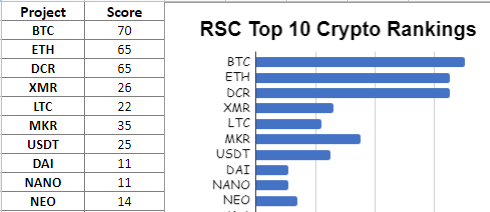
Doc's Daily Commentary

Mind Of Mav
Has The Smart Contract Financial Revolution Begun?
It was in July 2018 when Vitalik Buterin, in a well-balanced TechCrunch Sessions: Blockchain, said he wished all centralized exchanges would burn in hell.
While the innovator said he understood that everyone’s needs varied and it was incredibly hard for every aspect of people’s lives to be wholly decentralized and centralized, it opened the floor that led to a protracted debate on decentralized exchanges, the center of what now is DeFi.
Vitalik noted that while crypto-to-crypto exchanges, then, were in the early stages of development, their appeal of allowing trustless exchange of tokens was their main value proposition. The success of centralized exchanges, like Coinbase, he notes, would only make crypto ‘less fun.’
The appeal of distributed exchanges lies in users’ ability to transact without necessarily exchanging passwords or submitting personal details. All a user requires is a non-custodial wallet. After that, swapping is trustless, with confirmation done at the pace of the primary chain’s block generation time.
What is a Decentralized Exchange?
Decentralized exchanges, or simply swapping protocols, are just that: They are decentralized portals where users can exchange one token for another without a go-between. These platforms are formed to purposefully meet the permissionless swapping needs of one blockchain. For instance, in Ethereum, a DEX would allow the exchange of utility ERC-20 tokens. Over time, some of these tokens, like Chainlink’s LINK, for instance, command billions in market cap and several hundreds of millions in daily trading volumes. Accordingly, they are relatively liquid. Nonetheless, DeFi innovators discovered that token swapping is even easier if liquidity provision is shifted to extract from the billions held by token holders within the ecosystem.
The Automated Market Maker (AMM) Model
At the center of this revival is the concept of the automated market maker (AMM). Simply put, an AMM is an audited smart contract deployed by a DEX. This AMM often allows users to create liquidity pools of the deployed blockchain’s tokens. In Ethereum’s case, an AMM’s smart contract will enable one to create a liquidity pool of ERC-20 tokens. Within these liquidity pools, users can exchange one token for another cheaply and without an order book.
The Evolution of AMMs
Typically, there are two types of AMMs. In one category, there are those which professional market makers set up. There might be a tinge of centralization in this arrangement; however, they rely on liquidity pools to operate. An example of this provider is the Kyber Network, where liquidity provision is sealed. Instead, only professional market makers or the team can supply liquidity. The other category is fully automated and powered by algorithms without any form of intermediation. The creation of liquidity pools is free, and liquidity providers can supply their assets, earning passive income as a result.
The Quest for Yield Maximization and Capital Efficiency by AMM Models
From Ethereum, Binance Smart Chain (BSC), Waves, IOST, to the Flow Blockchain, DEXes relying on AMM models continue to grow. Year-to-date, for instance, in Ethereum, DeFi TVL has expanded over 80X as the number of projects listing their assets on various exchanges also rack up. At over $81 billion locked in different DeFi protocols and more than $5.9 billion in Uniswap alone, it is evident that there is interest, and investors are pouring in capital–supporting development.
DeFi is Exciting, but Loopholes must be sealed
However, as exciting as DeFi and AMM are as a finance innovation disrupting the status quo, there have been loopholes. For example, competing protocols can siphon liquidity in a “vampire attack.”
The Uniswap-SushiSwap debacle already showed how protocols could destabilize one system as the ensuing liquidity crunch threatens the stability of the whole ecosystem. The “problem” lies in the open-source nature of DEXes’ code. Adhering to the principles of the blockchain, swapping platforms launching from decentralized blockchains are open-source, continuously improved by the global community with bounty programs to incentivize thorough audits.
At the same time, these codes are also audited by third parties, primarily reputable blockchain security firms. Even so, to avert future exploits, Uniswap could be leading the way to licensing their innovation while cementing their lead. The recently launched Uniswap v3 with liquidity concentration incorporating elements of NFTs has a business license valid for three years. During this time, v3 code can’t be forked and improved by other projects drawn by Uniswap’s creation. This limits the speed of enhancements and is against the tenets of blockchain—community and open-source.
Conclusion
DeFi is fast-evolving, and AMMs represent this fact, revealing the desire of developers to continuously build user-centric, privacy-preserving, and highly functional open-source products. They are the centerpiece of a financial revolution gradually allowing blockchain purists to move closer to their goal. AMMs are opening up more opportunities for businesses and, most importantly, giving users more options to swap trustlessly without privacy intrusion while also earning passive income when choosing to supply liquidity in various pools.

The ReadySetCrypto "Three Token Pillars" Community Portfolio (V3)
Add your vote to the V3 Portfolio (Phase 3) by clicking here.
View V3 Portfolio (Phase 2) by clicking here.
View V3 Portfolio (Phase 1) by clicking here.
Read the V3 Portfolio guide by clicking here.
What is the goal of this portfolio?
The “Three Token Pillars” portfolio is democratically proportioned between the Three Pillars of the Token Economy & Interchain:
CryptoCurreny – Security Tokens (STO) – Decentralized Finance (DeFi)
With this portfolio, we will identify and take advantage of the opportunities within the Three
Pillars of ReadySetCrypto. We aim to Capitalise on the collective knowledge and experience of the RSC
community & build model portfolios containing the premier companies and projects
in the industry and manage risk allocation suitable for as many people as
possible.
The Second Phase of the RSC Community Portfolio V3 was to give us a general idea of the weightings people desire in each of the three pillars and also member’s risk tolerance. The Third Phase of the RSC Community Portfolio V3 has us closing in on a finalized portfolio allocation before we consolidated onto the highest quality projects.
Our Current Allocation As Of Phase Three:

Move Your Mouse Over Charts Below For More Information

The ReadySetCrypto "Top Ten Crypto" Community Portfolio (V4)
Add your vote to the V4 Portfolio by clicking here.
Read about building Crypto Portfolio Diversity by clicking here.
What is the goal of this portfolio?
Current Top 10 Rankings:

Move Your Mouse Over Charts Below For More Information

Our Discord
Join Our Crypto Trader & Investor Chatrooms by clicking here!
Please DM us with your email address if you are a full OMNIA member and want to be given full Discord privileges.
